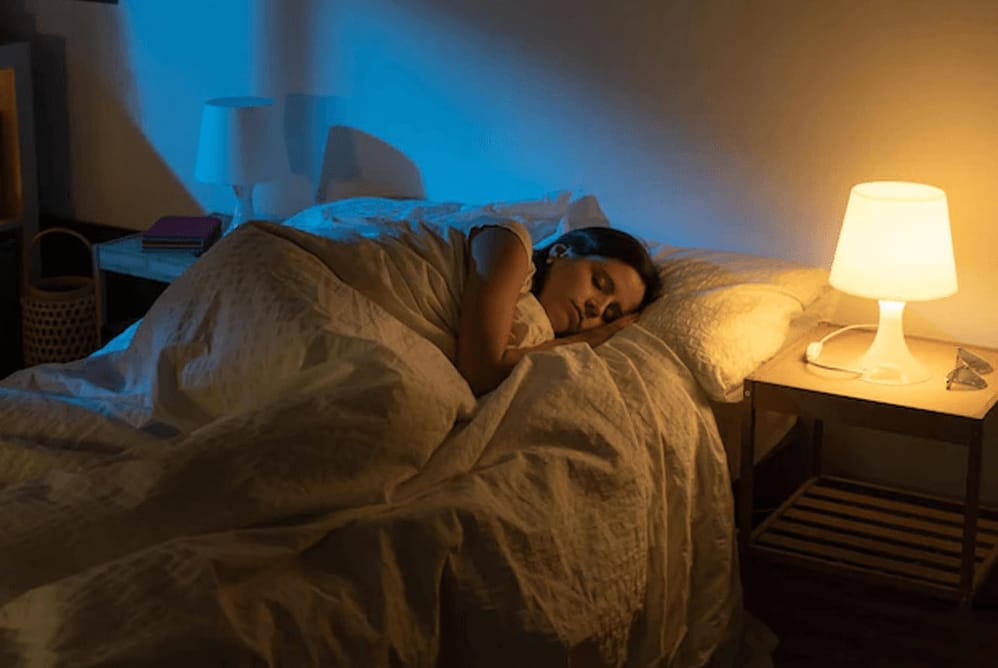- Thriving Guide
- Posts
- I’m a Light Sleeper and This Is What Actually Helps
I’m a Light Sleeper and This Is What Actually Helps
Struggling with every creak, cough, or flicker of light? Here’s how to sleep deeper, longer, and better starting tonight.

If the slightest sound wakes you, or you struggle to fall asleep even when you’re exhausted, you might be a light sleeper. While some people sleep through thunderstorms, others are stirred by the rustle of sheets. And while researchers don’t fully understand what makes someone a light sleeper, it’s clear that genetics, lifestyle, brain activity, and even hormones all play a role.
The good news? You’re not powerless. With a few strategic changes, you can improve both the quality and depth of your sleep and reduce the health risks that come with chronic sleep disruption.
What It Means to Be a Light Sleeper
Light sleepers have what’s called a low arousal threshold, meaning you’re more likely to wake in response to noises, smells, temperature changes, or movement. While it’s not a disorder on its own, light sleeping can lead to sleep deprivation, which is linked to conditions like:
Depression and anxiety
Heart disease
Weight gain and obesity
High blood pressure
Type 2 diabetes
Whether you're naturally wired this way or it’s due to lifestyle factors, there are steps you can take to sleep more soundly.
Tips That Actually Help Light Sleepers
1. Stick to a Consistent Sleep Schedule
Aim to go to bed and wake up at the same time every day including weekends. This trains your internal clock, making it easier to fall and stay asleep.
2. Create a Sleep-First Bedroom Environment
Your sleep space should be:
Cool (around 65°F is ideal)
Quiet (use a white noise machine if needed)
Dark (blackout curtains can block even streetlight glow)
Comfortable (invest in supportive pillows and a quality mattress)
Keep your bed reserved for sleep and intimacy only not work, scrolling, or TV.
3. Ditch the Devices
Blue light from phones, tablets, and TVs disrupts melatonin, the hormone that helps you fall asleep. Power down screens 30–60 minutes before bed and consider making your bedroom a screen-free zone altogether.
4. Wind Down the Right Way
Don’t expect your brain to slam on the brakes at bedtime. Instead, develop a calming wind-down routine:
Take a warm bath or shower
Practice deep breathing or guided meditation
Read a physical book (not on a backlit screen)
Do gentle stretches or yoga
If you’re tossing and turning for more than 20 minutes, get up and do something quiet in low light until you feel sleepy again.
5. Watch Your Diet and Timing
Avoid heavy meals, alcohol, caffeine (including chocolate), and spicy foods in the evening. If you’re hungry before bed, try a light snack like:
A small banana
Greek yogurt
Almonds or walnuts
These foods contain nutrients that support melatonin and serotonin production.
6. Move More, Sleep Better
Exercise improves sleep quality, especially aerobic activity like walking, swimming, or cycling. Just avoid intense workouts within three hours of bedtime they can rev up your system instead of winding it down.
7. Use Sleep Aids Thoughtfully
Earplugs, sleep masks, blackout curtains, and white noise machines can make a huge difference for light sleepers. Explore what works for your sensitivities and preferences.
Why You Might Be a Light Sleeper
Brainwave activity: People who are light sleepers tend to have fewer sleep spindles, a type of brain wave that helps block out external noise.
Genetics: Certain genes that regulate circadian rhythm (like CLOCK and BMAL1) may predispose you to lighter sleep.
Hormones: Cortisol, melatonin, and thyroid hormones all influence sleep depth and duration.
Medications: Common drugs like beta-blockers, statins, SSRIs, or corticosteroids can interfere with deep sleep stages.
Lifestyle: Irregular schedules, alcohol, nicotine, and even stress can all disrupt sleep patterns and increase nighttime awakenings.
Light Sleeping in Children
About 20% to 30% of children under 2 wake frequently during the night. If your child is a light sleeper, try:
Keeping the bedroom cool, dark, and quiet
Using sound machines with gentle white noise
Limiting co-sleeping beyond the first six months
Avoiding screen time before bed
Encouraging outdoor activity during the day to help regulate their circadian rhythm
When It’s More Than Just Light Sleeping
Sometimes what seems like light sleeping could be a symptom of a sleep disorder like:
Insomnia: Difficulty falling or staying asleep at least 3 times a week
Sleep apnea: Interrupted breathing during sleep, often marked by loud snoring or daytime exhaustion
Restless legs syndrome: Uncomfortable leg sensations that interrupt sleep
Talk to your doctor if you experience:
Persistent fatigue despite 7–8 hours of sleep
Trouble falling asleep most nights
Frequent night wakings
Loud snoring or gasping during sleep
Mood swings, brain fog, or difficulty functioning during the day
Final Thought
Being a light sleeper doesn’t mean you’re doomed to restless nights. With smart lifestyle adjustments and an environment designed for rest, you can enjoy deeper, more restorative sleep. And if those changes don’t help, a healthcare provider can guide you toward solutions that do.
Enjoyed this article? Subscribe to our newsletter or share it with someone who’s always running on empty.